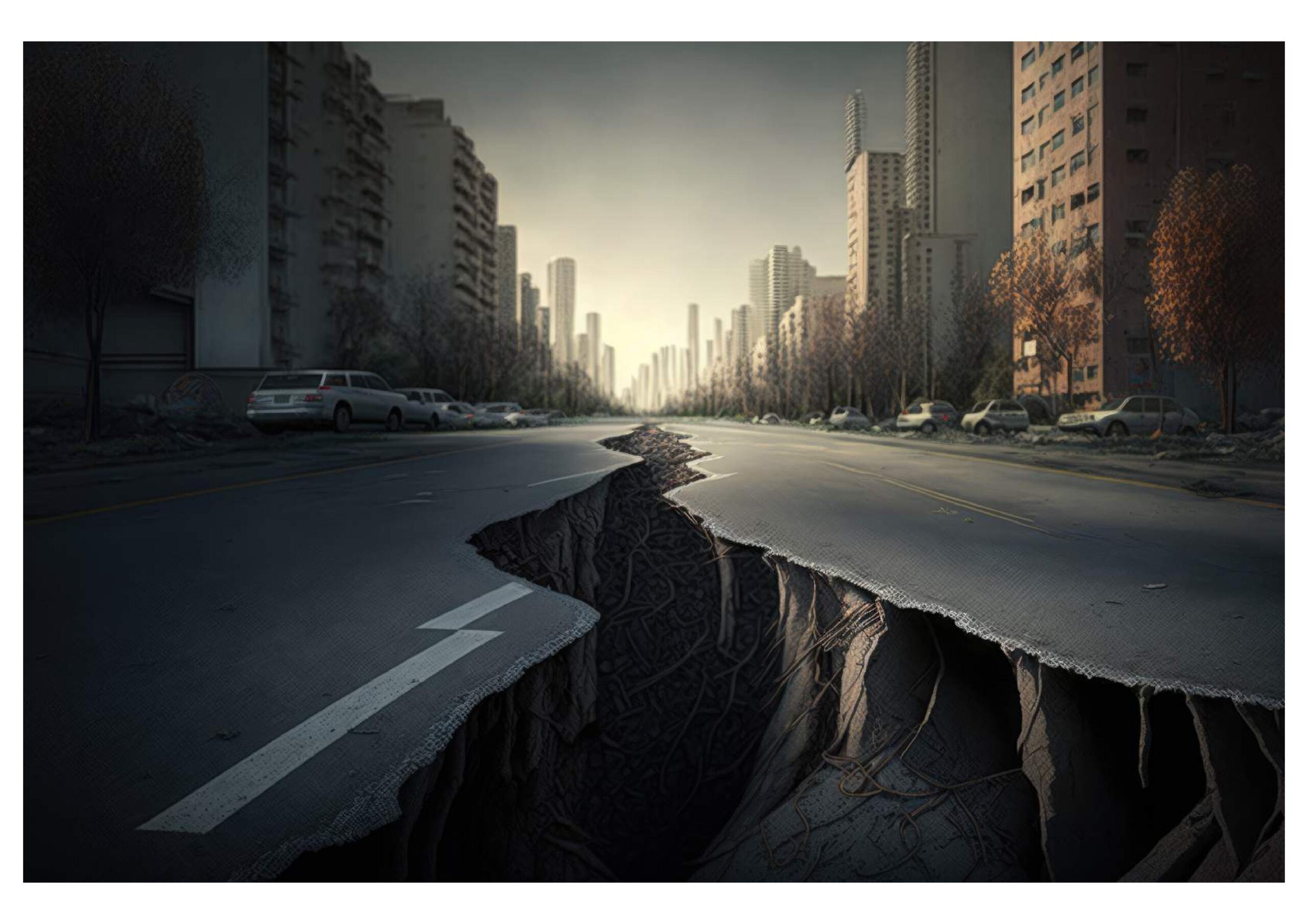Earthquakes, natural phenomena that evoke awe and concern, are the result of dynamic geological processes that shape the Earth’s crust. These seismic events, characterized by the sudden release of accumulated stress, trigger seismic waves that propagate through the ground, leading to ground shaking and potential devastation. While primarily caused by the movement of tectonic plates, earthquakes have far-reaching effects on landscapes, communities, and even global systems.
The Tectonic Dance: Origins of Earthquakes
- Tectonic Plates and BoundariesEarth’s lithosphere is divided into several tectonic plates that float on the semi-fluid asthenosphere beneath. These plates are in constant motion due to the convective currents within the Earth’s mantle. Boundaries where these plates interact are hotspots for seismic activity.
- Plate Movements and Stress AccumulationAs tectonic plates converge, diverge, or slide past each other, stress accumulates along their boundaries. This stress arises from friction and pressure caused by the movement or locking of plates, resulting in stored elastic energy.
- Sudden Release of EnergyWhen the accumulated stress exceeds the friction holding the plates together, the stored energy is suddenly released. This energy is transferred as seismic waves that travel through the Earth, causing the ground to shake.
Read more about reality of life, and universe on Scientific Questions.
The Anatomy of an Earthquake
- Epicenter and HypocenterThe epicenter is the point on the Earth’s surface directly above the earthquake’s origin. The hypocenter, or focus, is the exact point within the Earth where the seismic energy is released.
- Seismic WavesEarthquakes generate various types of seismic waves:
- Primary (P) Waves: These are compressional waves that travel through solids, liquids, and gases. They are the fastest seismic waves.
- Secondary (S) Waves: Shear waves that only travel through solids. They are slower than P-waves and cause side-to-side ground motion.
- Surface Waves: These travel along the Earth’s surface and cause the most destruction, including the rolling and shaking felt during an earthquake.
The Impact Spectrum: From Ripples to Ruptures
- Magnitude and IntensityEarthquake magnitude measures the energy released at the source and is quantified using the Richter scale or moment magnitude scale (Mw). Intensity, as measured by the Modified Mercalli Intensity (MMI) scale, gauges the effects on people, buildings, and the environment.
- Effects on Structures and Landscapes
- Structural Damage: Buildings, bridges, and infrastructure can be severely damaged or collapse during strong earthquakes. Modern engineering techniques aim to design structures that can better withstand seismic forces.
- Landslides: In hilly or mountainous regions, earthquakes can trigger landslides, burying communities under debris and exacerbating the destruction.
- Tsunamis: Underwater earthquakes can displace massive amounts of water, generating tsunamis that can inundate coastal areas with towering waves.
Mitigation and Preparedness
- Engineering Innovations Engineers play a crucial role in earthquake mitigation by designing structures that can resist seismic forces. Techniques include base isolators, flexible materials, and dampers that absorb and dissipate energy.
- Community Preparedness Educating communities about earthquake safety is paramount. Initiatives like “Drop, Cover, and Hold On” teach people how to protect themselves during shaking. Additionally, disaster response plans are developed to facilitate coordinated and effective actions.
- Early Warning Systems Some earthquake-prone regions are implementing early warning systems. These systems use advanced sensors to detect initial seismic waves and provide precious seconds to minutes of advance notice, allowing people to take cover and critical infrastructure to shut down safely.
Conclusion:
Earthquakes, as awe-inspiring as they are concerning, offer a glimpse into the dynamic nature of our planet. The tectonic dance of plates and the subsequent release of seismic energy result in ground-shaking events that shape landscapes and impact communities. Through engineering innovation, preparedness efforts, and public education, the detrimental effects of earthquakes can be mitigated, fostering resilience in regions prone to these geological wonders. As our understanding of earthquakes continues to grow, so too does our ability to adapt and respond to these natural phenomena.

